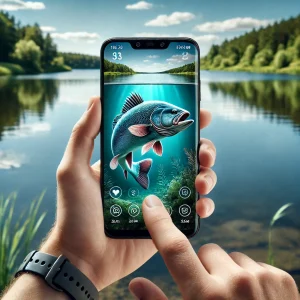In the world of medicine, technology has advanced by leaps and bounds, bringing innovations that once seemed impossible. Among these innovations, free ultrasound apps on your phone represent a revolution in the way we access medical care. These apps not only facilitate fast and efficient diagnoses, but also promote greater accessibility to healthcare.
Telemedicine and medical apps have been gaining traction, especially in remote areas where access to traditional medical equipment is limited. In this article, we’ll explore some of the best free apps available that turn your mobile device into an ultrasound tool.
Best Free Ultrasound Apps for Cell Phones
Exploring mobile ultrasound technology, several applications have emerged promising to bring this functionality to people's daily lives. Below, we will detail some of the most promising.
UltraSound App
The UltraSound App is a pioneer in the field of mobile ultrasound technology. This app uses the latest innovation in mobile digital health to convert signals captured by an external device connected to your smartphone into ultrasound images. Using advanced algorithms, the app promises stunning image clarity, facilitating fast and effective diagnoses.
Additionally, the UltraSound App seamlessly integrates with existing healthcare systems, allowing healthcare professionals to share results with colleagues in real time, a true revolution in the field of mobile diagnostic imaging.
EchoMobile
EchoMobile brings a user-friendly approach to mobile ultrasound, focusing on simplicity of use without sacrificing accuracy. With an intuitive interface, the application is ideal for healthcare professionals who need quick diagnostic consultations in emergency situations. The images generated are of high quality, ensuring an excellent tool for rapid diagnosis.
This app also promotes major healthcare innovation by providing tutorials that help new users maximize the use of free portable ultrasound technology, making advanced medical technology accessible to more professionals around the world.
MedScan Tool
MedScan Tool is another excellent example of a free medical app that offers ultrasound functionality. This app is especially useful for medical students and professionals who are learning about the wide applicability of ultrasound in different medical conditions.
With built-in educational features, MedScan Tool not only provides clear images but also guidance on image interpretation, which is crucial for medical training and daily clinical practice. The technology employed here is also an example of how free diagnostic apps are transforming medical education.
QuickDiagnosis
QuickDiagnosis stands out for its effectiveness in delivering rapid diagnoses via mobile phones. With a vast database, the application can help identify a wide variety of conditions from ultrasound images, making life easier for doctors and patients looking for quick and reliable answers.
This app not only makes use of mobile ultrasound technology but also integrates artificial intelligence capabilities to improve the accuracy of diagnoses, marking an important innovation point in the field of free health apps.
ScanHealth
Finally, ScanHealth is an app that combines ultrasound functionality with a personal health tracking and recording platform. In addition to allowing users to perform ultrasounds, the app also helps users maintain a digital health history that can be shared with doctors or kept for personal monitoring.
ScanHealth is an excellent tool for those looking to maintain closer control over their health, offering ultrasound functionality within everyone's reach, contributing significantly to mobile digital health.
Future Applications and Continuous Development
As mobile technology and applications continue to evolve, the possibilities for future mobile ultrasound applications are vast and promising. The healthcare industry is increasingly looking for solutions that offer convenience, remote access, and reduced cost, essential elements in globalized and decentralized care settings.
Technological innovations and improvements
The continued development of these applications not only improves the accuracy of ultrasound images, but also expands functionality to include more procedures and diagnoses. Research is underway to incorporate artificial intelligence that can assist in the automatic interpretation of images, increasing the reliability of diagnoses and reducing the burden on healthcare professionals.
Expansion into new markets
In addition to human use, there is potential for these technologies to be expanded to veterinary use, allowing veterinarians to perform ultrasound examinations on animals on-site, which could be crucial in emergency situations or in rural areas. This flexibility demonstrates the potential for mobile ultrasound to transform a variety of health and wellness-related fields.
Impact on remote regions
Specifically in remote or developing regions where access to clinics and hospitals is limited, mobile ultrasound applications can play a key role in increasing access to basic medical diagnostics. This technology represents an opportunity to democratize healthcare by providing diagnostic tools to communities that previously had limited access to such resources.
These future applications not only highlight the potential for continued growth in the field of mobile ultrasound, but also underscore the importance of continued investment in research and development to maximize the positive impact of this technology on global society.

Features and Technology
High Resolution Image
The most advanced apps offer high-resolution images that allow doctors to see the fine details needed for accurate diagnoses. This functionality is crucial to ensuring that healthcare professionals can make detailed and accurate assessments directly from their mobile devices.
Multi-Device Compatibility
To ensure accessibility and usability, these applications are designed to be compatible with a wide range of mobile devices, including smartphones and tablets from different manufacturers. This allows professionals in different locations and with different technological resources to use the technology.
Data Storage and Sharing
Data storage and sharing capabilities make it easy to manage medical records and collaborate with healthcare professionals. Users can save ultrasound images directly to their device or upload them to a cloud storage system, allowing easy access and sharing with other doctors for consultations or second opinions.
Integration with Health Systems
Many applications are designed to integrate easily with existing electronic health systems. This makes it easier to include ultrasound results in patients’ electronic health records, improving continuity of care and administrative efficiency.
AI-Assisted Analysis
Some applications incorporate artificial intelligence algorithms to help analyze images. This technology can identify patterns and suggest preliminary diagnoses, helping doctors make faster and more accurate assessments.
Customizable Viewing Modes
Applications often offer multiple viewing modes, such as 2D, 3D, and Doppler, to meet different diagnostic needs. This is particularly useful in specialties that require different types of images, such as obstetrics, cardiology, and vascular medicine.
These features not only enhance the effectiveness of mobile ultrasound applications but also contribute to democratizing access to quality healthcare, especially in areas where traditional equipment is unavailable or economically unviable.
Conclusion
The innovation of free ultrasound apps on your phone is opening new doors for diagnostic medicine. With the continuous evolution of technology, these apps promise to make healthcare more accessible and efficient, making medical care more inclusive and comprehensive.
FAQ
Are mobile ultrasound apps accurate? Yes, mobile ultrasound apps can be quite accurate, but their accuracy depends largely on the transducer technology used and the quality of the app software. They are best used for screening and initial diagnostics and are a good tool for monitoring medical care in remote locations or in situations where traditional equipment is not available.
Which devices are compatible with these apps? Most of these apps are compatible with modern iOS and Android devices. However, specific compatibility may vary from app to app. It’s important to check the app’s specifications to make sure it works with your device and that you have the necessary hardware, such as a compatible mobile transducer.
Is any additional equipment required? Yes, in addition to your smartphone or tablet, you usually need a mobile transducer that connects to your device via a USB port or wireless connection. This transducer is what actually captures the ultrasound images.
Can these apps be used by anyone? While anyone can download these apps, correct interpretation of ultrasound images requires specialized medical training. Therefore, they are best used by qualified healthcare professionals.
What are the limitations of these applications? Limitations include dependence on the quality of the transducer hardware, the need for training to interpret the images, and the reduced range of functionality compared to traditional ultrasound equipment. In addition, they may not be suitable for all types of diagnosis, being more used for specific cases such as simple obstetric and abdominal examinations.



